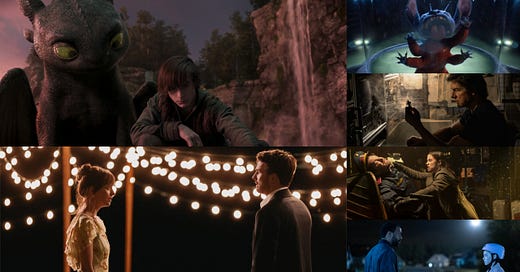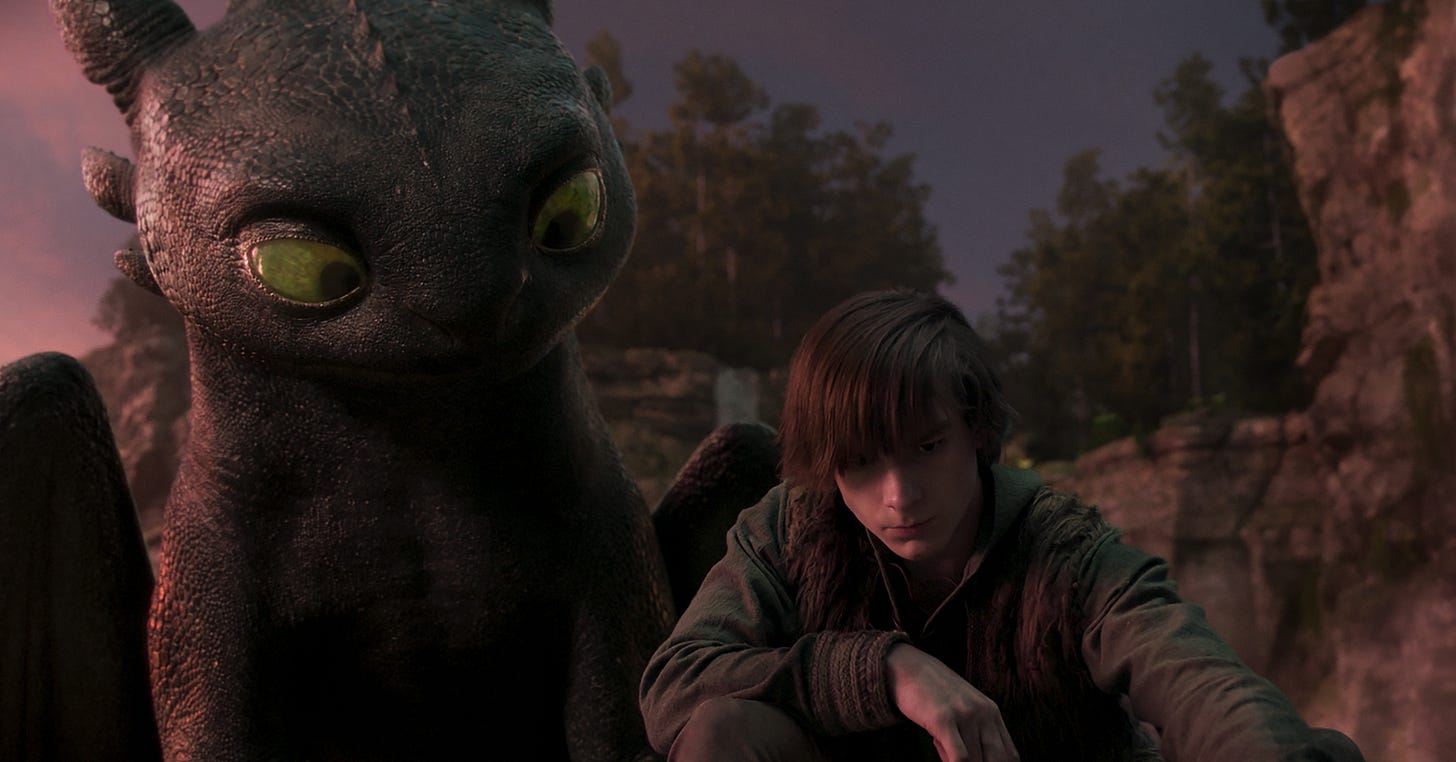Weekend Box Office: ‘How to Train Your Dragon’ Tops With $198M Worldwide as ‘Mission: Impossible 8’ Passes $500M
'Materialists' opens with solid $12 million but 'Life of Chuck' stumbles with $2 million.
In a skewed irony of sorts, this weekend marks the 11th anniversary of the domestic theatrical release of How to Train Your Dragon 2. The DreamWorks Animation sequel, which many argue is their absolute best film (I’d rank only Kung Fu Panda 2 above it), was a hoped-for “breakout sequel” that wasn’t, at least not in North America. Despite rave reviews and strong buzz, the film debuted with “just” $49 million in North America. This was barely more than the first film’s $43 million opening weekend, which was itself deemed disappointing in 2010 before it legged out to $218 million. However, the film followed the otherwise standard sequel “thing” by earning less in North America ($177 million, still a fine 3.61x multiplier) and more overseas ($444 million, or almost more than the first film’s $491 million global cume) for a robust $621 million worldwide total.
Nonetheless, the narrative was that the film was a disappointment, and its otherwise standard “dark sequel” plot (including Hiccup’s father getting murdered by a temporarily brainwashed Toothless) was partially to blame. To be fair, the rave reviews discussing the film’s dramatic elements, intense action, and emotional melodrama may have done more harm than good for parents who might not want their kids to cry during the Father’s Day movie outing. Following the also comparatively “darker” Kung Fu Panda 2 (which involved a past-tense panda genocide) doing the “less in North America although more overseas” thing to disappointed pundits, there’s a reason why A) Kung Fu Panda 3 and How to Train Your Dragon: The Hidden World were comparatively lighter and comedy > drama follow-ups, and B) DWA mostly pulled back on “drama > comedy” flicks, save for Abominable in 2019 and The Wild Robot in 2024.
The How to Train Your Dragon franchise now has an unmitigated smash hit for Father’s Day weekend. Universal and DreamWorks’ live-action remake of the 2010 toon topped the domestic and global box office this weekend, earning $83.7 million in North America and $197.8 million worldwide. It’s the third-biggest opening weekend for any DreamWorks film, trailing only Shrek 2 ($108 million Fri-Sun/$128 million Wed-Sun in 2004) and Shrek the Third ($122 million in 2007). If adjusted for inflation, it would rank around eleventh, behind the Shrek quadrilogy, the Madagascar trilogy, Kung Fu Panda, Monsters Vs Aliens, and Shark Tale; but I digress. Given the strong reviews (77% and 6.8/10 on Rotten Tomatoes) and an A from CinemaScore, conventional wisdom suggests a 2.9x multiplier for an over/under $245 million domestic cume. That would be, full circle alert, tied with the inflation-adjusted total of How to Train Your Dragon 2.
Its $114 million overseas debut includes a solid-for-the-2020s $11.2 million opening in China, eclipsing the lifetime totals of Sonic the Hedgehog 3, The Little Mermaid, and Wonka. Dean DeBlois’ remake of his own 2010 toon (which he co-directed with Chris Sanders before helming the sequels solo) pulled a 9.5 from Mayon and TPP audience polling (along with an 8.4 on Douban), the highest for any Hollywood flick this year and above the 7.4-9.0 likes of The Little Mermaid, The Lion King, Mufasa, and Aladdin. Fun fact: How to Train Your Dragon 2 earned $65 million in China in 2014, while The Hidden World earned $55 million in 2019. Whether it ends up closer to Minions: The Rise of Gru ($35 million in 2022) or Aladdin ($53 million in 2019), this is “found money.” Offhand, a global 2.9x multiplier and/or “conventional rate of descent” gets the $150 million-budgeted flick to $575-$600 million.
Honestly, I’d be inclined to fret over the mere 2.35x weekend multiplier, but A) the $150 million flick just earned $198 million worldwide in its global debut and B) all the other elements skew positive. So, let’s just blame Father’s Day for the multiplier, since it’ll almost certainly stick around. The film earned $8.1 million domestically in IMAX ($16.5 million globally), making up 9.8% of the North American total. That’s the second-biggest IMAX domestic share for a “family title” over the last decade. Playing 58% female, 57% over 25, and 34% under 12, the picture skewed 49% Caucasian, 21% Hispanic, 14% Asian, and 9% African American. I’m inclined to argue that the Hispanic percentage might have been higher (Lilo & Stitch skewed 39% and Godzilla x Kong played 35% Hispanic on their respective opening weekends) if they weren’t currently being hunted for sport nationwide, but I digress.
It’s another example of how the success or failure of a live-action remake is primarily dependent upon whether audiences give a damn about the animated source material. How to Train Your Dragon is the definitive animated franchise of the 2010s, with a couple of generations’ worth of kids who grew up on the theatrical trilogy and/or the copious (223 episodes since 2013) in-world television shows. Gus Van Sant’s Psycho comparisons aside, it worked for paying moviegoers as a “faithful” replication (complete with Gerard Butler reprising) and a PLF-worthy period piece action fantasy that played like “baby’s first Game of Thrones” to younger moviegoers. Anecdotally, my ten-year-old had little interest, but attended a showing last night with a friend and ended up loving it. He’s now eagerly anticipating the live-action How to Train Your Dragon 2. I suppose that means I’ll be calling Safe Surrender first thing tomorrow.






